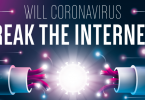It’s hard to fathom just how slow it was to access information in the past and how restricted it used to be.
There was a time when word of mouth carried new ideas at a snail’s pace – and even printed notices moved no faster than a horse could ride.
The adoption of the printing press in Europe gradually improved the availability of news, but it wasn’t until the installation of international telegraph lines that we first caught a glimpse of the possibilities of fast, worldwide information sharing.
Things accelerated quickly over the last century, from telegraphs to telephone, radio and television broadcasts, satellite communications, linked networks and the free and open web. But with the development of mobile technology, access to information has been blown wide open in the 21stcentury and the late-20th century invention of the internet has moved across borders and into formerly limited spaces.
Now, a tablet, smartphone or laptop and wireless receiver can grant unimaginable levels of access to information quickly and easily, almost anywhere in the world.
New media, new challenges
Media of all sorts, including film, television, games and ebooks are spreading ideas that leapfrog from one society to another with little in the way of boundaries. Languages, cultures, lifestyles and their underlying technologies, thoughts, histories and world views hop across borders to inspire change or greater understanding in new regions.
An American teen can quickly and easily download a live-action drama from Korea, an animated show from Japan or a BBC documentary from the UK using a variety of devices. Smartphone users and TV viewers in Africa or India can pick up American English programs and learn about lifestyles an ocean away.
Political developments and natural disasters are covered within minutes – even seconds – online, on social media and through digital news sources. With live-streaming, you can learn about news as it happens.
While widespread access to media has greatly transformed populations and societies around the world, the impact and value of increased access to scientific and medical information cannot be emphasized enough.
Once, gaining access to research papers was expensive, time-consuming, limited by painfully slow publishing schedules and shipping cycles that could take months to deliver. Now, however, high-quality information about science, politics, healthcare, technology and other specialized subjects has become much quicker, cheaper and easier to access.
Information available online, via social media, in ebook format and in app-based deployments, really levels the playing field, opening access to resources in formerly underserved and struggling communities. Doctors in remote areas can carry a library of reference materials wherever they go and can find the latest research in moments. Small communities and individuals without local scientists, doctors or technicians can use mobile devices and computers to learn, develop skills and solve problems with the latest solutions.
The dark side
But there’s a dark side to this unprecedented access to information: High-speed publishing and unregulated sources allow for the spread of fake news and false data.
Consider: In the 20th century, journalists and their editors followed strict guidelines for how to report the news. Publishers of books and journals took the time to make sure new research was peer-reviewed and substantiated before putting out a new issue or edition. By contrast, it’s amazing how you can learn about almost any topic these days, but that checking the reliability of your information source is increasingly difficult and more important than ever.
Thankfully, more people and organizations are aware of this challenge and are working to spread access to reliable, high-quality information. Edited by Mikhail Blagosklonny, Oncotarget is an oncology magazine that publishes on a regular schedule and makes all of its articles available online. They publish via newsletter, website and a number of leading social media channels including Facebook and Twitter.
Across these platforms, Blagosklonny and Oncotarget represent a prime example of the benefits of easy access to information while maintaining traditionally rigorous fact-checking standards. As more conventional publishers take advantage of today’s technology to connect with readers, higher quality information will become more readily available.
Platforms like Facebook are also engaging with the challenges of ensuring the accuracy and value of information and may start to tag, boost or otherwise privilege information from established and reliable sources.
Obviously, you should take full advantage of the incredible access to information offered by mobile technology and the internet, as well as emerging technologies like voice assistants and augmented or virtual reality.
With all of these platforms, however, it is essential to pay close attention to the information source.
Bottom line: Look for qualified primary sources, such as research papers or accounts from eyewitnesses. For other news and information, you can identify good quality sources by how established they are and whether they follow journalistic procedures or research standards such as editorial scrutiny, fact checks or peer reviews.
For aNewDomain, I’m T.E. Wing.
Cover image by the Defense Advanced Research Projects Agency (DARPA)), Public Domain.













